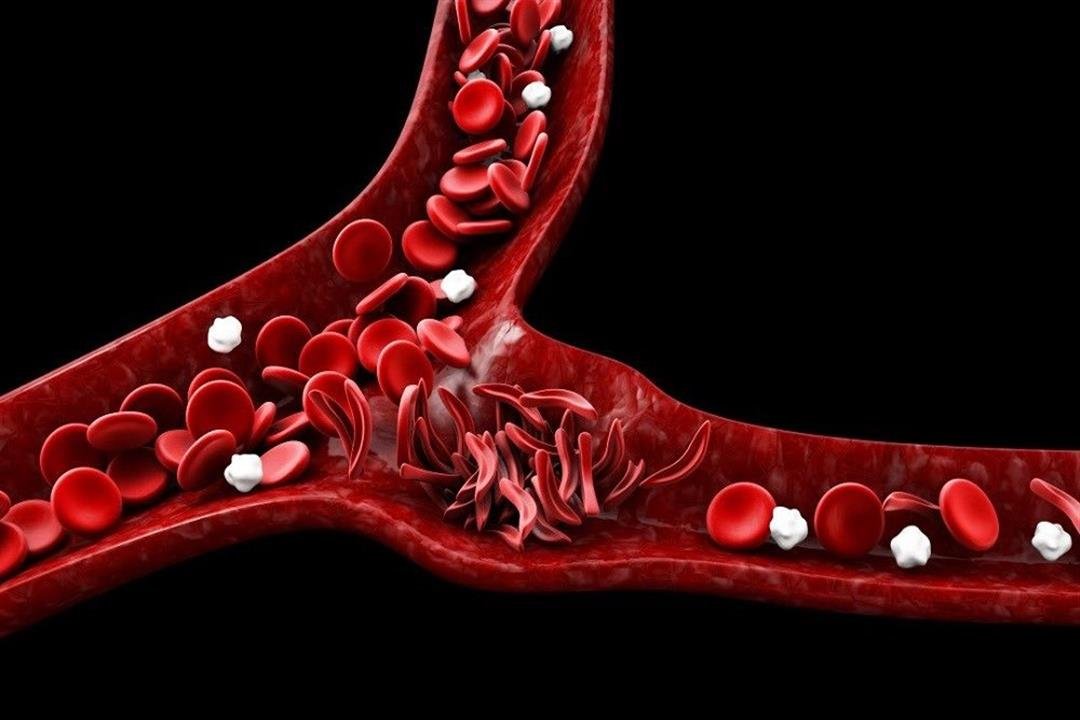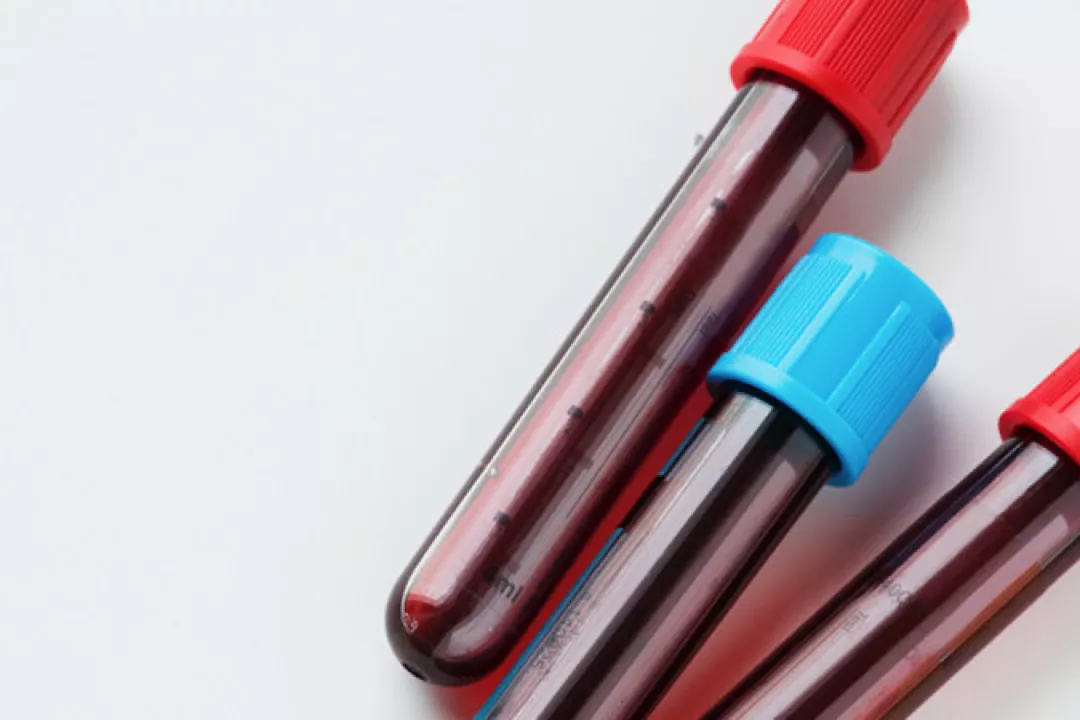Sickle Cell Disease
Introduction
Sickle Cell Contamination (SCD) is an inherited blood issue that impacts a considerable number of people all over the planet. Portrayed by the presence of uncommon hemoglobin, called hemoglobin S, this disease causes red platelets to become firm, cheap, and formed like bows or sickles. These sickle-framed cells can block circulatory system in little veins, provoking outrageous misery, organ hurt, and other serious surprising issues. Sorting out SCD, its causes, incidental effects, finding, and treatment decisions is fundamental for managing the condition and chipping away at the individual fulfillment for those influenced.

Types and Categories
SCD integrates a couple of related wrecks, each portrayed by the presence of hemoglobin S. The most generally perceived types include:
1. HbSS: The most outrageous kind of SCD, achieved by procuring two sickle cell characteristics, one from each parent. This is as often as possible suggested as sickle cell slightness.
2. HbSC: Comes about due to obtaining one sickle cell quality and one quality for hemoglobin C, another unusual hemoglobin. This design is by and large milder than HbSS.
3. HbS Beta-Thalassemia: Achieved by getting one sickle cell quality and one beta-thalassemia quality, which impacts hemoglobin creation. This can go from delicate to outrageous.
4. HbSD, HbSE, and HbSO: Fascinating kinds of SCD that happen when a sickle cell quality is gained nearby another uncommon hemoglobin quality (D, E, or O).
Symptoms and Signs
The symptoms of SCD can change by and large among individuals and can go from delicate to serious. Ordinary incidental effects include:
1. Pain Crises
Startling episodes of serious torture, known as vaso-occlusive crises, are an indication of SCD. These disturbance crises can happen wherever in the body anyway regularly impact the chest, mid-locale, joints, and bones. The exacerbation is achieved by the blockage of circulation system by sickle-shaped cells.
2. Anemia
SCD causes continuous hemolytic sickliness, where red platelets separate speedier than the body can convey them. This prompts exhaustion, weakness, whiteness, and shortness of breath.

3. Swelling
Extending in the hands and feet, known as dactylitis, is a large part of the time one of the primary secondary effects saw in a really long time with SCD. This extending is a direct result of obstructed circulatory system.
4. Frequent Infections
The spleen, which helps fight sicknesses, can become hurt in individuals with SCD, making them all the more unprotected to bacterial defilements. Pneumonia is a primary wellspring of death in little children with SCD.
5. Delayed Growth and Puberty
Messes with SCD every now and again experience delayed improvement and immaturity due to continuous sickliness and various intricacies.
6. Vision Problems
Blockage of veins in the eye can provoke vision issues and, surprisingly, visual lack.
Causes and Risk Factors
Sickle cell disease (SCD) is an innate blood issue portrayed by the presence of uncommon hemoglobin, known as hemoglobin S. Understanding the causes and chance components related with SCD is fundamental for both evasion and the board techniques.
Genetic Factors
The fundamental driver of sickle cell disease is obtaining the sickle cell quality from the two gatekeepers. Individuals who get one copy of the sickle cell quality and one common hemoglobin quality convey the sickle cell characteristic, which regularly doesn’t cause incidental effects. Nevertheless, obtaining two copies of the sickle cell quality results in the improvement of uncommon hemoglobin S, provoking sickle cell disease.
Biological Factors
Normally, sickle cell contamination adjusts the development of red platelets. Average red platelets are round and versatile, but in individuals with SCD, they become unyielding and formed like bow moons or sickles. These strange cells can pack together and block circulation system, inciting torture episodes (crises) and potential organ hurt. Likewise, the production of surprising hemoglobin constructs the shortcoming to sicknesses, as the changed cells are less effective in conveying oxygen and fighting organisms.

Environmental Factors
Regular variables, for instance, climate and rise can affect the reality of sickle cell contamination incidental effects. High heights with lower oxygen levels could fuel aftereffects due to the diminished oxygen-conveying breaking point of sickle cells. Crazy climatic circumstances, including temperature limits, can set off anguishing crises in individuals with SCD. Receptiveness to defilement and toxic substances in the environment can in like manner annihilate secondary effects and by and large outcomes.
Lifestyle Factors
Lifestyle choices expect a section in managing sickle cell disease. Adequate food and hydration are urgent for help in everyday prosperity and breaking point intricacies. Normal dynamic work, inside individual capacities, can help with additional creating dispersal and lessen the bet of snares like stroke. Avoiding substance abuse, particularly smoking, is vital as it can furthermore weaken lung capacity and demolish respiratory complexities.
Medical History Factors
Individual clinical records can influence the organization of sickle cell contamination. Past clinical issue or operations could impact overall prosperity and recovery from sickle cell-related entrapments. Treatment history, including medications and blood bondings, expects a basic part in disease the leaders and can influence long stretch prosperity results.
Social and Cultural Factors
Social and social components influence the experiences of individuals living with sickle cell disease. Monetary status impacts permission to clinical benefits organizations and the ability to deal with the expense of significant treatments and medications. Social convictions and chips away at enveloping prosperity and disorder could influence decisions with respect to treatment adherence and searching for clinical thought. Genuinely steady organizations and neighborhood expect a fundamental part in adjusting to the hardships of managing a continuous sickness like SCD.
Psychological Factors
Mental factors, including pressure and significant prosperity, can impact the organization of sickle cell disease. Undesirable conditions or mental wellbeing issues could heighten incidental effects and addition the repeat of desolation crises. Making fruitful strategy for practical adaptations and getting to close to home prosperity sponsorship can chip away at for the most part thriving and individual fulfillment for individuals with SCD.
Age-related Factors
Age-related factors influence the organization and development of sickle cell disease. Pediatric thoughts consolidate early screening and preventive measures to administer secondary effects and disarrays in youths. As individuals with SCD age, they could defy new challenges associated with contamination the leaders and the all out effects of progressing disease. Understanding developmental stages and advancement factors helps tailor clinical benefits mediations to individual necessities.
Gender-related Factors
Direction express differentiations exist in the regularity and symptoms of sickle cell disease. Women with SCD could experience additional challenges associated with pregnancy and work, including extended risks of intricacies, for instance, blood poisoning or sickle cell crisis. Hormonal effects on affliction development and aftereffect earnestness contrast between genders, highlighting the meaning of redone clinical consideration moves close.
Combination of Factors
The exchange between innate, normal, lifestyle, and psychosocial factors adds to the complexity of sickle cell ailment. Individuals with SCD could experience moving ailment reality considering the blend and collaboration of these components. Understanding the consolidated effects of various bet factors is central for intensive contamination the chiefs and further creating prosperity results.
Diagnosis and Tests for Sickle Cell Disease
Early and precise finding of Sickle Cell Disease (SCD) is indispensable for strong organization and neutralization of intricacies. The characteristic cooperation incorporates various tests and screenings that can perceive the presence of sickle cell characteristics and choose the reality of the contamination. Here is a point by point blueprint of the assurance and tests for SCD:
Newborn Screening
Importance
• Early acknowledgment is key for administering SCD and thwarting serious intricacies.
• In various countries, baby assessing for SCD is a standard piece of neonatal thought.
Process
• Blood Test Grouping: two or three drops of blood are accumulated from the youngster’s heel not long after birth.
• Research focus Assessment: The blood test is bankrupt down for the presence of surprising hemoglobin.
Benefits
• Early examination thinks about brief beginning of medications, for instance, prophylactic counter agents poisons and vaccinations to thwart sicknesses.
• Watchmen can get innate exhorting and tutoring on managing the infection.
Blood Tests

Hemoglobin Electrophoresis
• Portrayal: This test confines different kinds of hemoglobin considering their electrical charge.
• Reason: Perceives the presence and degrees of customary and uncommon hemoglobin, including hemoglobin S.
• Method: A blood test is taken and set in a gel. An electric stream is applied, making the hemoglobin proteins move and construction specific gatherings.
High-Performance Liquid Chromatography (HPLC)
• Depiction: A definite method for recognizing and estimating different hemoglobin varieties.
• Reason: Avows the finding of SCD by perceiving and assessing the levels of hemoglobin S.
• Framework: A blood test is dealt with through a chromatograph, what separates hemoglobin varieties considering their substance properties.
Complete Blood Count (CBC)
• Depiction: A regular blood test that activities the overall prosperity and union of various platelets.
• Reason: Perceives paleness and screen the general blood strength of individuals with SCD.
• Limits Assessed: Red platelet count, hemoglobin levels, hematocrit, white platelet count, and platelets.
Genetic Testing
DNA Analysis
• Depiction: Genetic testing perceives changes in the HBB quality, which causes SCD.
• Reason: Asserts the finding by recognizing unequivocal inherited changes related with SCD.
• Framework: A blood test or cheek swab is accumulated, and DNA is eliminated and explored for the presence of changes.
Prenatal Testing
• Amniocentesis: An illustration of amniotic fluid is taken from the midsection to test for SCD.
• Chorionic Villus Assessing (CVS): An illustration of cells from the placenta is taken to test for SCD.
• Reason: Concludes whether the child has SCD or is a carrier (has sickle cell quality).
Additional Diagnostic Tests
Sickle Cell Test
• Depiction: A blood test that checks for the presence of sickle-shaped red platelets when introduced to a low-oxygen environment.
• Reason: Insists the presence of sickle cells, showing SCD.
• Strategy: A blood test is taken, and red platelets are introduced to a compound that diminishes oxygen levels. Sickle-shaped cells can then be seen under an amplifying focal point.
Bilirubin Test
• Depiction: Measures the level of bilirubin in the blood.
• Reason: Raised levels of bilirubin can show hemolysis (breakdown of red platelets), a normal issue in SCD.
• Procedure: A blood test is taken and taken apart for bilirubin center.
Imaging and Organ Function Tests
Transcranial Doppler (TCD) Ultrasound
• Portrayal: An innocuous test that activities circulation system in the psyche’s huge stock courses.
• Reason: Recognizes messes around with SCD in peril for stroke.
• Framework: A ultrasound device is placed on the scalp to measure circulatory system speeds in the cerebral courses.
Echocardiogram
• Portrayal: A ultrasound of the heart.
• Reason: Recognizes heart-related intricacies in individuals with SCD, as pneumonic hypertension.
• Framework: A transducer is gotten across the chest to convey photos of the heart and overview its capacity.
Pulmonary Function Tests
• Depiction: Measures how well the lungs are working.
• Reason: Perceives lung challenges, as restrictive lung disorder, typical in individuals with SCD.
• Methodology: The patient breathes in into a device that activities lung volume and wind stream.
Treatment Options
Sickle Cell Disease (SCD) is a consistent condition that requires total and nonstop organization. While there is no broad fix, different treatment decisions are open to diminish incidental effects, hinder troubles, and work on the individual fulfillment for those affected. Here are the bare essential treatment decisions for SCD:
Medications
Hydroxyurea
• Depiction: Hydroxyurea is a medication that decreases the repeat of torture crises and the necessity for blood bondings.
• Part: It works by growing the advancement of fetal hemoglobin (HbF), which thwarts the course of action of sickle-shaped cells.
• Association: Taken orally, commonly one time every day.
• Eventual outcomes: Potential auxiliary impacts integrate bone marrow disguise, disorder, and skin rashes. Standard blood checking is required.
L-glutamine (Endari)
• Depiction: L-glutamine is an amino destructive that diminishes the disarrays of SCD by defending red platelets from oxidative damage.
• Part: It further develops the NAD redox potential in sickle cells, decreasing oxidative tension.
• Association: Taken orally, two times each day.
• Delayed consequences: Ordinary optional impacts consolidate blockage, affliction, headache, stomach torture, and back torture.
Pain Management
• Over-the-Counter Pain relievers: Medications like acetaminophen (Tylenol) and ibuprofen (Advil, Motrin) can be used for not exactly overpowering alleviation from distress.
• Medication Misery Medications: For moderate to serious distress, experts could suggest more grounded pain relievers, for instance, opiates (morphine, oxycodone).
• NSAIDs: Nonsteroidal quieting drugs (NSAIDs) like naproxen can similarly be used to supervise desolation and disturbance.

Blood Transfusions
• Portrayal: Blood bondings incorporate moving sound red platelets from a provider to the patient.
• Uses: Used to treat serious sickliness, thwart strokes, and manage other outrageous ensnarements.
• Types:
o Simple Holding: Standard holding of red platelets.
o Exchange Holding: Disposing of a part of the patient’s blood and displacing it with promoter blood to reduce the amount of sickle cells.
• Bets: Potential risks consolidate iron over-trouble, alloimmunization (immune reaction to sponsor blood), and defilements. Chelation treatment may be supposed to administer iron over-trouble.
Bone Marrow Transplant (Hematopoietic Stem Cell Transplant)
• Depiction: A bone marrow move is the vitally conceivable answer for SCD. It incorporates overriding the patient’s bone marrow with strong marrow from a reasonable provider.
• Framework:
o Donor Assurance: A matched family provider is loved for the best outcome.
o Preparation: The patient goes through chemotherapy to demolish the ongoing bone marrow.
o Transplant: Sound fundamental microorganisms from the sponsor are blended into the patient’s flow framework, where they move where it counts marrow and begin making strong red platelets.
• Possibilities: This framework conveys basic risks, including join versus-have sickness (GVHD), illnesses, and organ hurt. It is consistently put something aside for serious cases on account of these risks.
Gene Therapy
• Depiction: Quality treatment is an emerging treatment that intends to address the innate defect causing SCD.
• Framework: It incorporates modifying the patient’s hematopoietic central microorganisms to convey sound hemoglobin. Techniques include:
o Gene Choice: Adding a reasonable copy of the hemoglobin quality.
o Gene Adjusting: Using CRISPR-Cas9 or various advances to address the adjustment of the patient’s DNA.
• Status: Quality treatment is still under research and clinical fundamentals yet has shown promising results in starter studies.
• Potential: Offers a one-time treatment that could really fix SCD or basically decline secondary effects.
Supportive Therapies
Folic Acid Supplements
• Depiction: Folic destructive is basic for conveying new red platelets.
• Association: Taken regularly to help red platelet creation and hinder lack of iron.
Antibiotics
• Portrayal: Prophylactic enemy of microbials, similar to penicillin, are prescribed to hinder pollutions in little children with SCD.
• Length: Regularly given until fundamentally age five, yet may be continued longer considering individual bet factors.
Vaccinations
• Importance: Vaccinations are fundamental for thwarting illnesses in individuals with SCD.
• Proposed Antibodies: Pneumococcal, Haemophilus influenzae type b (Hib), meningococcal, and yearly influenza inoculations.
Lifestyle and Home Remedies
Hydration
• Importance: Staying generally around hydrated thwarts sickling of red platelets.
• Proposition: Drink a ton of fluids, especially water, throughout the day.
Healthy Diet
• Food: A good eating routine rich in natural items, vegetables, whole grains, and lean proteins maintains by and large prosperity.
• Supplements: Additional supplements and minerals may be recommended considering individual necessities.

Avoiding Extreme Temperatures
• Impact: Ludicrous cold or power can set off torture crises.
• Direction: Dress appropriately for the environment, avoid unforeseen temperature changes, and stay in climate controlled conditions at whatever point what is going on permits.
Regular Exercise
• Benefits: Moderate movement can deal with in everyday prosperity and reduce pressure.
• Alert: Avoid requesting practices that could set off a torture crisis.
Mental and Social Assistance
Counseling and Support Groups
• Fundamental consolation: Directing and maintain social occasions can help individuals and families with adjusting to the up close and personal and mental impact of SCD.
• Resources: Various social class have affiliations and online conversations focused on supporting those influenced by SCD.
Educational Support
• School Offices: Children with SCD could require extraordinary offices in school to manage their prosperity needs and prevent hardships.
Personal Stories and Case Studies
1. Patient Stories
Hearing from individuals living with SCD gives critical encounters into the everyday troubles and wins of managing the disease. Individual stories include the impact of various prescriptions and strategy for practical adaptations.
2. Instances of conquering affliction
Instances of beating affliction from patients who have gone through bone marrow moves or participated in quality treatment primers offer assumption and inspiration to others living with SCD.
Expert Insights

1. Clinical Specialists
Explanations and guidance from hematologists and other clinical specialists provide authentic guidance on supervising SCD and the latest degrees of progress in treatment.
2. Research Updates
Staying informed about consistent investigation and new therapy decisions is crucial for patients and clinical consideration providers. Progressing degrees of progress in quality treatment and novel medications are particularly reassuring.
Conclusion
Sickle Cell Disease is a convoluted and testing condition that requires broad organization and care. Impels in treatment decisions and ceaseless assessment offer expect dealt with individual fulfillment and potential answers for those affected by this genetic issue. By staying instructed and proactive, individuals with SCD and their families can investigate the hardships of the disease and have fulfilling existences.
(AFQS)
What is Sickle Cell Illness (SCD)?
Sickle Cell Illness is an inborn blood issue where red platelets become inflexible and ratty, taking on a bow or sickle shape. This reduces their capacity to pass oxygen all on through the body.
What causes Sickle Cell Illness?
Sickle Cell Illness is accomplished by getting two extraordinary hemoglobin qualities (one from each parent), affecting the improvement of unusual hemoglobin known as hemoglobin S.
Is Sickle Cell Affliction acquired?
Without a doubt, Sickle Cell Illness is gotten from guardians who are transporters (have the sickle cell quality). Assuming the two watchmen pass on the sickle cell quality, their youngster will have Sickle Cell Illness.
What are the consequences of Sickle Cell Infirmity?
Auxiliary impacts waver in any case regularly merge agony episodes (emergencies), weakness, diseases, postponed progression in youngsters, and complexities, for example, stroke or organ hurt.
How is Sickle Cell Infection inspected?
Assessment a significant part of the time integrates blood tests to check for the presence of surprising hemoglobin. Intrinsic testing may comparably be utilized to ensure the presence of the sickle cell quality.
Might Sickle Cell Illness whenever anytime be feeling far improved?
As of now, there is no expansive answer for Sickle Cell Infection. Treatment bases on coordinating eventual outcomes and forestalling captures through cure, blood bondings, and different drugs.
What difficulties can ascend out of Sickle Cell Illness?
Inconveniences coordinate serious hopelessness episodes, contaminations (considering reduced security), stroke, organ hurt (especially to the spleen, liver, kidneys), and broadened danger of other clinical issues.
What way of life changes can assist with overseeing Sickle Cell Illness?
Keeping areas of strength for a norm, remaining hydrated, staying away from over the top temperatures, getting standard activity (inside cutoff points), and really trying not to smoke are proposed way of life changes.
What is the future for somebody with Sickle Cell Illness?
Future has improved with actuates in treatment and care. Anyway, it changes relying on the sincerity of the sickness and consent to clinical advantages.
What examination is being finished on Sickle Cell Tainting?
Steady evaluation rotates around extra making remedies, finding a fix through quality treatment or adolescent microorganism moves, and understanding the infection’s natural and normal factors better.
Note:-
The information provided on this blog regarding medicnn price and side effects is solely based on data collected from public domains. I am not a doctor or a medical professional. While i strive to provide accurate and up to date information, I cannot guarantee the absolute accuracy or completeness of the data. It is always recommended to consultee with a qualified healthcare professional or doctor for personalized medical advice and information. the content on this blog should not be considered a substitute for professional provided at their own discretion and risk. I do not assume any responsibility for any consequences arising from the use of the information on this blog.
